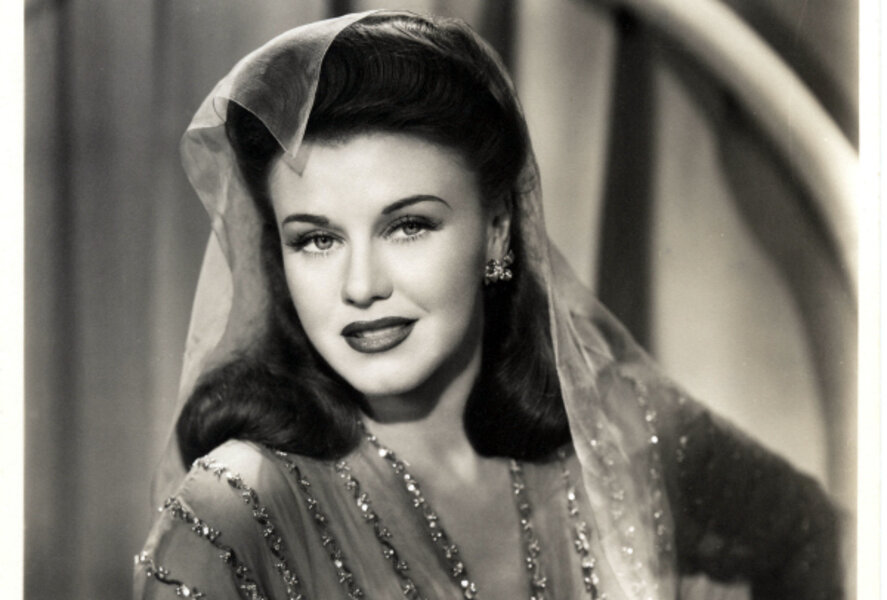Celebrating the Ginger Rogers century
Loading...
Ginger Rogers will be forever locked in an elegant, eternal embrace with Fred Astaire, with whom she starred in 10 movie musicals that emphasized their fancy dance steps and glamourous costumes long before "Dancing With the Stars" turned into a modern-day TV hit.
The films became an iconic part of the 1930s, the Depression era starved for distraction from the hard times playing themselves out off screen.
But the celebration of the 100th anniversary of Rogers' birth this year (she died in 1995) is also revealing a solo Rogers who was a megastar in on her own, which included being the highest paid actor or actress in Hollywood in 1942, by one account.
Rogers won an Oscar for "Kitty Foyle" in 1940, a dramatic role that veered far from the comedies and musicals that dominated her earlier career. She went on to success on stage in musicals such as "Mame" and "Hello Dolly!", unveiled her star on the Hollywood Walk of Fame, and capped her career by being celebrated as a Kennedy Center Honoree in 1992.
A new exhibition called the "Ginger Rogers Century" at the Howard Gotlieb Archival Research Center at Boston University reveals Rogers' career for what it was: long, varied, and, quite often, brilliant.
Rogers was among a group of strong female stars that emerged as movies moved out of the 1920s silent era into one where women uttered snappy dialogue and more than held their own against the male stars of the day, pointed out journalist and film historian Nick Clooney (father of actor George Clooney and brother of singer Rosemary Clooney) at an event marking the opening of the exhibition Oct. 24.
"In her later years she became a very, very important dramatic actress. And she was a wonderful comedienne," said actress Angela Lansbury, who was raised in England before World War II watching Rogers perform on film, in an interview before the event with the Monitor. "But basically I remember her dancing with Fred Astaire. That, to me, was absolutely 'it' .... I thought nobody danced with the flair and abandon and extraordinary skill that she did. And she was so much fun."
Writer and actor Garson Kanin summed up the duo this way: "The magic of Astaire and Rogers cannot be explained; it can only be felt. They created a style, a mood, a happening. They flirted, chased, courted, slid, caressed, hopped, skipped, jumped, bent, swayed, clasped, wafted, undulated, nestled, leapt, quivered, glided, spun – in sum, made love before our eyes. We have not seen their like since."
Added Ms. Lansbury, in her remarks at the Rogers event: "Ginger glided across the screen in incredible gowns and feathers and chiffon. And she knew how to use them. What a talent. Critics described her as a sassy, charming, talented, but above all, likeable."
Yet to see Rogers in a role like "Roxie Hart," based on the same story that later would become the award-winning Broadway and Hollywood musical "Chicago," is to see quite a different performer than the blonde who swept across the dance floor in Astaire's arms. (Here's a clip shown at the Rogers event.)
Among her co-stars in her solo career of more than 60 films were some of Hollywood's top male stars, including Cary Grant, Henry Fonda, William Powell, and James Stewart.
The Rogers exhibit, in an open-ended run at Boston University, features posters, her Oscar statuette, and other memorabilia, including the roller skates she wore in a clever skating duet with Astaire in the film "Shall We Dance," as well as letters and telegrams written to and by Rogers.
The Rogers tribute evening, hosted by Mr. Clooney, and including songs associated with Rogers ("Embraceable You," "But Not for Me") beautifully performed by award-winning cabaret artist Karen Oberlin, may be repeated again in early 2012 in New York City (time and venue to be announced).
The films with Astaire are all worth renting, but also check her out as a comedienne par excellence in "Monkey Business," with Cary Grant, and "The Major and the Minor," with Ray Milland. (Rogers is reported to have given Lucille Ball a helping hand early in her comedy career.)
Rogers once summed up her career this way. "The most important thing in anyone's life is to be giving something," she said. "The quality I can give is fun, joy, and happiness. This is my gift."
With much of her career preserved on video, generations to come still have a chance to find out just what delighted those Depression-era moviegoers decades ago.






